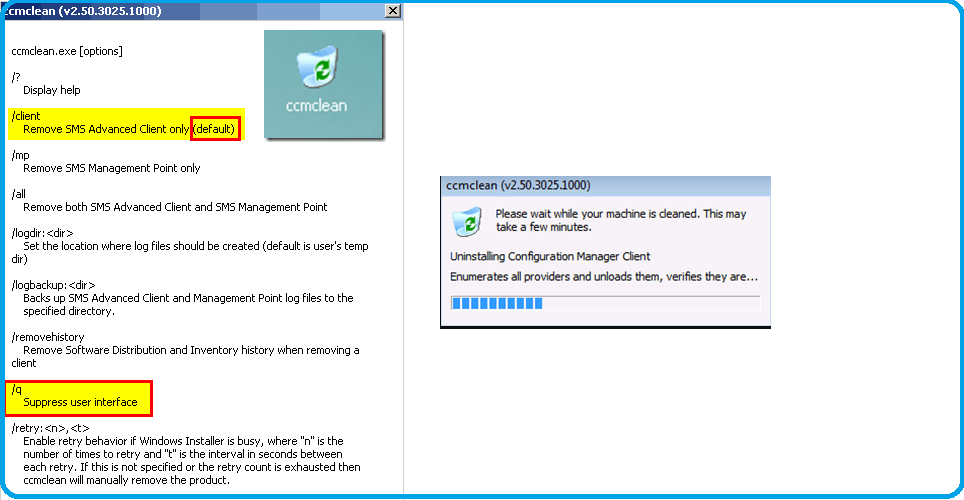
Un Sccm Client Powershell Install Program Powershell
Unfortunately for the remaining few percentage points of computers that SCCM is * not* working pretty well for when SCCM does break it does so spectacularly with style and pizzazz.uninstall program powershell silent For example, to uninstall Adobe Reader.

This script was developed for those computers. It first tries to uninstall SCCM gracefully if the installer is present, but regardless of whether it fails or not afterward it will wipe all traces of SCCM from the hard drive and registry. This allows you to do a new “clean” installation of SCCM afterward on machines that would not let you previously reinstall.Mass Uninstall the Application by unique ID - Publisher To Deploy use program string: powershell.exe -Executionpolicy Bypass -File MassUninstallMSI.ps1 SCCMOG Enter unique Identifier - Remember to change line from Publisher if not using that as unique.We are going to use PowerShell to accomplish this and explain each step in this guide! Running SCCM UninstallerIt’s usually a good idea to let SCCM try to uninstall itself even if we are going to forcefully remove everything anyways later.
For example, if you were trying to run remotely with RM or WMI calls, maybe PSEXEC, and you shut down the WMI repository then you gotta go remote into the machine and start it back up before you can move on. This ensures it runs local and eliminates a lot of issues caused by remoting. If this doesn't get it something is seriously broke on the system and I generally PXE boot and apply a new image at that point.I'll put my batch file that I use to kick this off in another post, but the way this works is that I copy it over to a local system's temp folder, then I kick it off with PSExec. This is the most effective way I've found of clearing up client side issues. Go ahead and create a new PowerShell. Ps1 file: # Attempt to run the SCCM uninstallerIf (Test-Path -Path "$Env:SystemDrive\Windows\ccmsetup\ccmsetup.exe") ”) by adding these commands: # Remove SCCM's smscfg file (contains GUID of previous installation)Remove-Item -Path "$($Env:WinDir)\smscfg.ini" -Force -Confirm:$false -Verbose -ErrorAction SilentlyContinueRemove-Item -Path 'HKLM:\Software\Microsoft\SystemCertificates\SMS\Certificates\*' -Force -Confirm:$false -Verbose -ErrorAction SilentlyContinueWrite-Host "All traces of SCCM have been removed"And that’s it! I’m sure there’s more traces that SCCM leaves that my script potentially aren’t getting but these are the critical pieces that can prevent you from reinstalling.
...


 0 kommentar(er)
0 kommentar(er)
